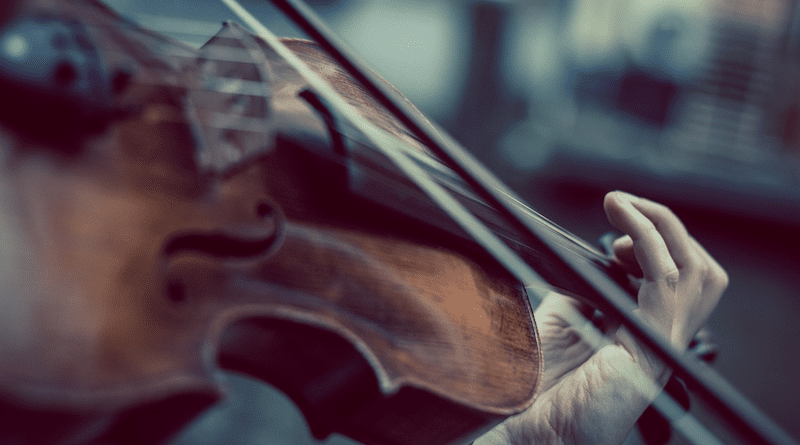Capturing And Analyzing Subtle Combination Tones Produced By Violins
When two musical notes are played simultaneously, the human ear can perceive weak additional tones called combination tones. These subjective tones result from the nonlinearity of the inner ear and are attributed to the amplification mechanism of the cochlea. Subjective tones are perceived with different intensities by different individuals. While less perceivable, objective combination tones are also generated by some musical instruments. Because these tones are present in the air, they can be detected by sensitive microphones, measured, and recorded.
In The Journal of the Acoustical Society of America, published on behalf of the Acoustical Society of America by AIP Publishing, researchers in Italy from the Conservatorio Musicale Lorenzo Perosi, the Università di Firenze, and the Istituto di Scienza e Tecnologia dell’Informazione used violins to explore the rarely studied objective combination tones. They found that the combination tones produced by higher-quality violins were much stronger and clearly audible.
“Up to now, the combination tones generated by the violin were considered too small to be heard, and therefore, of no importance in music,” said author Giovanni Cecchi, of the Università di Firenze. “Our results change this view by showing that combination tones generated by violins of good quality can be easily heard, affecting the perception of the intervals.”
A professional violinist standing onstage in a musical auditorium played a series of two-note combinations, called dyads, using five violins of different ages and qualities. The team recorded and processed the resulting audio signals.
Each violin produced combination tones during the playing of all the dyads. The strongest tone was found at a frequency below the lower note of the dyad. The harmonic distortions and air resonance developed in each violin contributed to its unique combination tone amplitude.
“We found that combination tones were much stronger and clearly audible in good violins,” said Cecchi. “The strongest one was found in an old Italian violin, made in Bologna in 1700 by the famous luthier Carlo Annibale Tononi. Combination tones were instead negligibly small in violins of poor quality.”
Results from the study link powerful air resonance to violin sound quality. The most noticeable combination tones correlated with air resonance peak amplitude. The higher-quality violins produced a stronger air resonance due to several factors, including structural material and crafting techniques.
Future work will focus on analyzing a greater number and variety of violins to identify which violin part serves as the exact origin of a violin’s combination tones.

